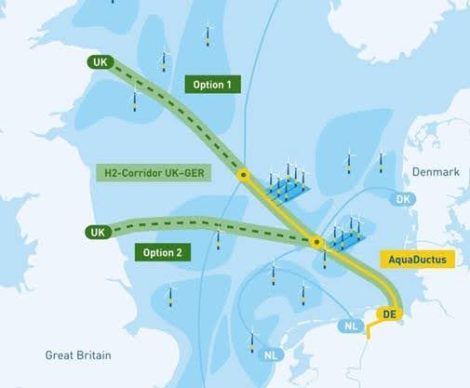-
Offshore hydrogen pipeline between UK and Germany planned by national gas transmission operators
Date posted:
-
-
-
Post Author
Greg Kelsall
-
-

The UK and Germany have unveiled plans to collaborate on the development of a cross-border hydrogen pipeline network, marking a significant step towards greater European energy integration.
National Gas, the UK’s national transmission system operator (TSO), and its German counterpart, Gascade, have signed an MoU to explore the creation of a hydrogen transport corridor linking the two countries via the North Sea. This will build on the results of the recent study by Arup, Adelphi, and Dena as part of the German-British hydrogen partnership.
According to a statement shared by National Gas on LinkedIn, the proposed project would provide up to 20GW of bi-directional hydrogen transport capacity. The company said this would contribute to building a competitive hydrogen economy while supporting energy independence for both the UK and the EU.
The planned infrastructure would involve offshore pipelines originating from either St Fergus in Scotland (Option 1) or Teesside in north-east England (Option 2), connecting to Gascade’s AquaDuctus pipeline in the North Sea. AquaDuctus, which has already received backing at the state level, has been designated an Important Project of Common European Interest (IPCEI).
Its current network includes a 100-kilometre connection between Germany and the Netherlands, with a further 200 kilometres earmarked for future expansion.
Ulrich Benterbusch, Managing Director at Gascade, described the collaboration as a key milestone for Europe’s energy future. He went on to say that the initiative would allow both nations to benefit from the UK’s abundant renewable energy resources and Germany’s hydrogen storage and consumption infrastructure, helping to diversify energy imports and bolster European energy security.
The two TSOs intend to pursue PCI (Project of Common Interest) or PMI (Project of Mutual Interest) designation for the initiative, as well as seek its inclusion in the European Ten-Year Network Development Plan (TYNDP) for 2026. These steps would underscore the project’s importance to wider European energy policy and planning.
